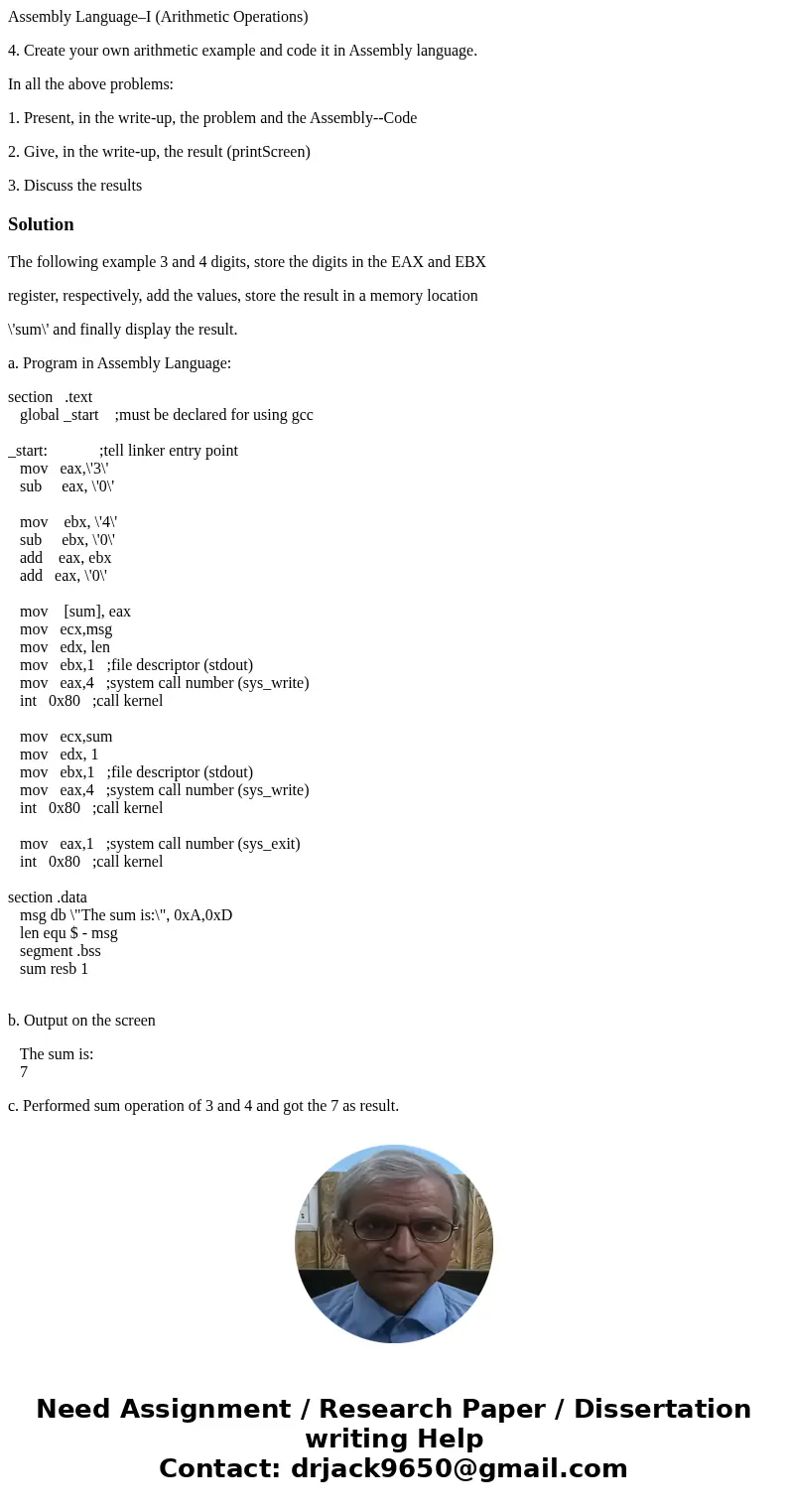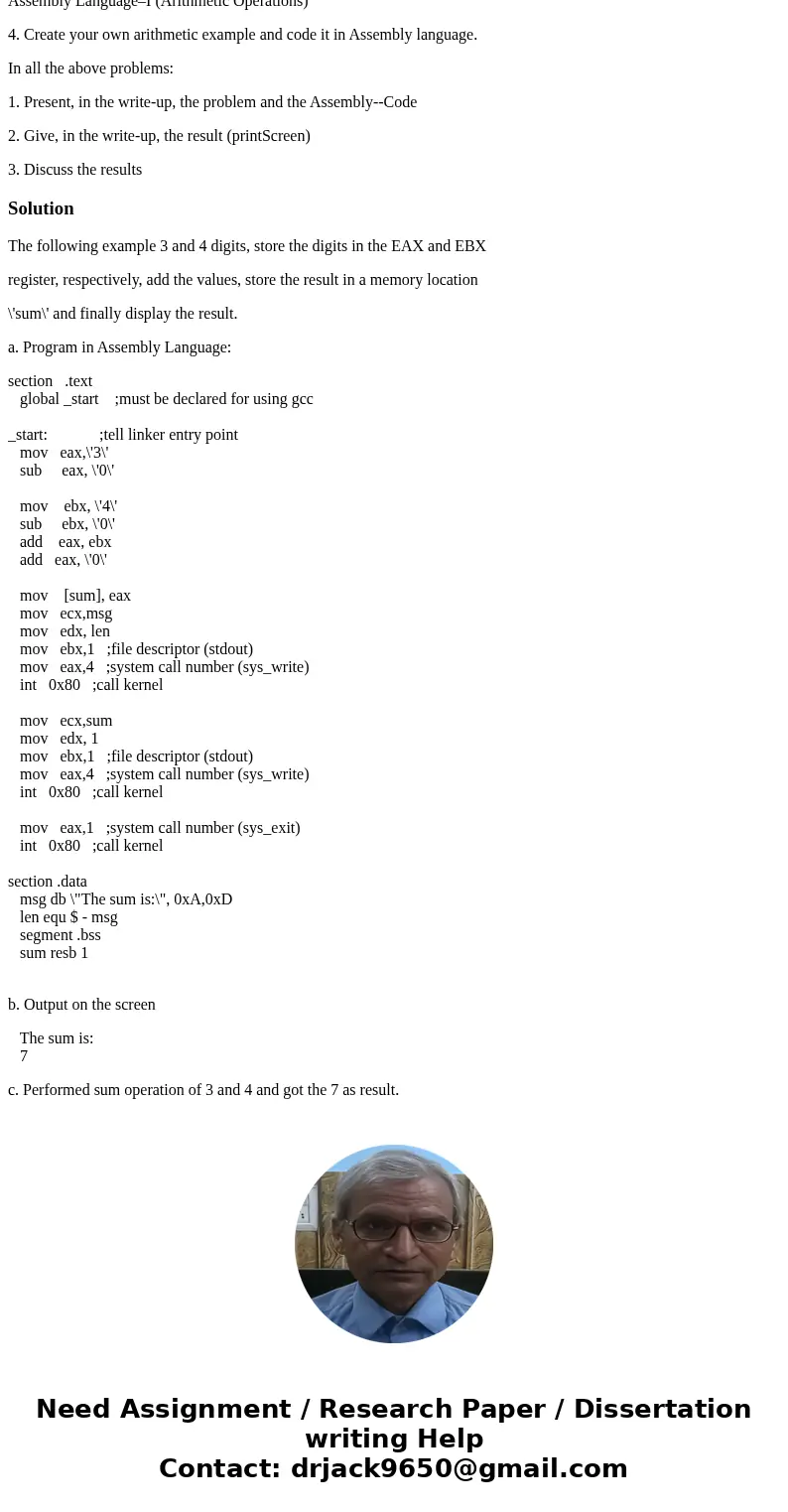Assembly LanguageI Arithmetic Operations 4 Create your own a
Assembly Language–I (Arithmetic Operations)
4. Create your own arithmetic example and code it in Assembly language.
In all the above problems:
1. Present, in the write-up, the problem and the Assembly--Code
2. Give, in the write-up, the result (printScreen)
3. Discuss the results
Solution
The following example 3 and 4 digits, store the digits in the EAX and EBX
register, respectively, add the values, store the result in a memory location
\'sum\' and finally display the result.
a. Program in Assembly Language:
section .text
global _start ;must be declared for using gcc
_start: ;tell linker entry point
mov eax,\'3\'
sub eax, \'0\'
mov ebx, \'4\'
sub ebx, \'0\'
add eax, ebx
add eax, \'0\'
mov [sum], eax
mov ecx,msg
mov edx, len
mov ebx,1 ;file descriptor (stdout)
mov eax,4 ;system call number (sys_write)
int 0x80 ;call kernel
mov ecx,sum
mov edx, 1
mov ebx,1 ;file descriptor (stdout)
mov eax,4 ;system call number (sys_write)
int 0x80 ;call kernel
mov eax,1 ;system call number (sys_exit)
int 0x80 ;call kernel
section .data
msg db \"The sum is:\", 0xA,0xD
len equ $ - msg
segment .bss
sum resb 1
b. Output on the screen
The sum is:
7
c. Performed sum operation of 3 and 4 and got the 7 as result.


 Homework Sourse
Homework Sourse